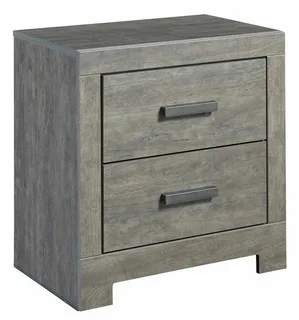Nightstands are a staple in any bedroom, offering both functionality and style. However, their prices can vary significantly depending on the state you live in. Factors such as local economic conditions, cost of living, availability of materials, and transportation expenses play a crucial role in determining the price of a nightstand. Whether you are looking for a budget-friendly option or a luxury piece, understanding regional price differences can help you make a smarter purchasing decision. If you’re curious about the current market rates, check out the latest Nightstands price in United States to see where different options stand.
Factors Affecting Nightstand Prices in Different States
1. Cost of Living
One of the biggest determinants of furniture prices, including nightstands, is the cost of living in a particular state. States with a high cost of living, such as California, New York, and Massachusetts, often have higher prices for furniture due to increased labor wages, rental costs for retail spaces, and general expenses. On the other hand, states with a lower cost of living, such as Mississippi, Arkansas, and West Virginia, tend to have more affordable nightstand options.
2. Supply Chain and Transportation Costs
The location of manufacturing plants, warehouses, and distribution centers can significantly impact the final price of a nightstand. States that have easy access to major furniture manufacturing hubs, such as North Carolina, may offer lower prices due to reduced transportation costs. Conversely, states that rely heavily on imported furniture, like Hawaii and Alaska, will generally have higher prices due to shipping and logistics expenses.
3. Material Availability
The type of materials used in nightstands also affects their price, and this varies by state. For example, states with an abundance of locally sourced wood, such as Oregon and Washington, may have more affordable solid wood nightstands. Meanwhile, states where such materials need to be imported may experience higher prices.
4. Retail Competition
The number of furniture retailers in a state can impact nightstand prices. States with a high density of furniture stores, such as Texas and Florida, tend to have more competitive pricing due to increased market competition. In contrast, rural states with fewer retailers may have higher prices because of limited options and reduced competition.
Average Nightstand Prices by Region
Northeast Region (New York, Massachusetts, Pennsylvania, etc.)
- Budget Nightstands: $80 – $180
- Mid-Range Nightstands: $200 – $500
- Luxury Nightstands: $600 – $1,500+
Southeast Region (Florida, Georgia, North Carolina, etc.)
- Budget Nightstands: $60 – $150
- Mid-Range Nightstands: $170 – $450
- Luxury Nightstands: $500 – $1,300+
Midwest Region (Illinois, Ohio, Michigan, etc.)
- Budget Nightstands: $70 – $160
- Mid-Range Nightstands: $180 – $470
- Luxury Nightstands: $550 – $1,400+
Southwest Region (Texas, Arizona, New Mexico, etc.)
- Budget Nightstands: $65 – $155
- Mid-Range Nightstands: $190 – $480
- Luxury Nightstands: $580 – $1,450+
West Region (California, Oregon, Washington, etc.)
- Budget Nightstands: $90 – $200
- Mid-Range Nightstands: $210 – $550
- Luxury Nightstands: $650 – $1,600+
Before making a purchase, check out the latest Nightstands prices in United States to compare options and find the best deals available.
FAQs About Nightstand Pricing in Different States
Q1: Why do nightstand prices differ by state?
A: The variation in nightstand prices across different states is due to a combination of economic and logistical factors. States with higher costs of living tend to have more expensive furniture due to increased wages, rental costs, and consumer demand. Additionally, transportation costs play a role—states closer to manufacturing hubs may have lower prices compared to states that rely on imported furniture. Taxes, material availability, and retailer competition also contribute to the price differences.
Q2: Which states have the most affordable nightstands?
A: Generally, states with a lower cost of living, such as Arkansas, Mississippi, and Kentucky, offer more affordable nightstands. Additionally, North Carolina, which is known for its furniture manufacturing industry, provides a wide range of nightstand options at competitive prices. Texas also has relatively lower prices due to its large market and competitive retail landscape.
Q3: Are online nightstand prices different from in-store prices?
A: Yes, online retailers often have lower prices because they do not have the overhead costs associated with physical stores, such as rent and in-store staffing. However, shipping costs can sometimes negate these savings, especially for bulkier furniture. Some online stores also offer exclusive discounts or bundle deals that are not available in physical stores.
Q4: What are the best times of the year to buy a nightstand at a discount?
A: The best times to purchase a nightstand at a discounted price include major shopping events like Black Friday, Cyber Monday, Memorial Day sales, and end-of-season clearance sales. Many furniture retailers also offer discounts around major holidays such as Labor Day and Presidents’ Day.
Q5: Are custom-made nightstands worth the higher price?
A: Custom-made nightstands tend to be more expensive than mass-produced options, but they offer personalized design, high-quality craftsmanship, and unique materials. If you have specific style preferences or require a nightstand to fit a unique space, a custom piece may be a worthwhile investment.
Q6: How does the type of wood affect nightstand pricing?
A: The type of wood used plays a significant role in pricing. Hardwoods like oak, maple, and mahogany are more durable and typically more expensive than softwoods like pine. Exotic woods, reclaimed wood, or sustainably sourced materials can also increase the price of a nightstand.
Q7: Should I buy a nightstand set or individual pieces?
A: Purchasing a nightstand as part of a bedroom set can sometimes be more cost-effective than buying individual pieces. Retailers often offer discounts for bundled furniture purchases, but if you have specific style preferences or need only one nightstand, buying separately may be a better option.
Q8: Can I negotiate nightstand prices at furniture stores?
A: Yes, some furniture stores allow for price negotiations, especially for floor models, discontinued items, or bulk purchases. If you are shopping in person, it is worth asking for a discount or checking if they offer price matching.
Q9: How long should a quality nightstand last?
A: A well-made nightstand can last anywhere from 10 to 30 years, depending on the materials used and how well it is maintained.
Q10: What features should I look for in a good nightstand?
A: Consider storage options (drawers or shelves), material quality, durability, height relative to your bed, and additional features like built-in charging ports or soft-close drawers.
Conclusion
Nightstand prices vary across different U.S. states due to multiple factors, including cost of living, transportation costs, material availability, and retail competition. While states with higher living expenses generally have more expensive furniture, savvy shoppers can still find great deals by researching different options and taking advantage of discounts. Whether you’re looking for a budget-friendly option or a luxurious addition to your bedroom, My Signature Home Furniture is one of the best places for the lowest Nightstands prices in United States. By comparing prices and understanding the key factors influencing costs, you can make a smart and informed purchase.
for more info visit our: https://penwhatmatters.com/








